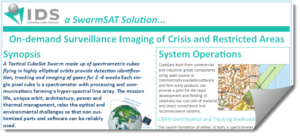Arnold Kravitz, President, INNOVIM Defense Services, briefed a concept for On-Demand Surveillance Imaging of Crisis and Restricted Areas” using “SwarmSats” to identify and track hazardous and lethal material from Chemical, Biological, Radiological and Nuclear (CBRN) events and other catastrophes. As presented, SwarmSats, made up of modular low-cost imaging and spectrometric CubeSats flying in highly elliptical orbits, could provide rapid-reaction multi-spectral and hyperspectral imaging surveillance of hazard and lethal threats in restricted areas for periods ranging from two weeks to over a month. The tactical nature of the system would allow its use as a rapid replacement for satellites that have been damaged or destroyed in a conflict.

These swarms are formed from a pattern of independently operating CubeSats, launched from a post-boost vehicle (PBV), that form a scanning line array. Each CubeSat is either an imaging camera, spectrometer, hyperspectral camera, or a combination. For example, a wide field of view imaging camera can be placed in the center of a line of narrow field of view spectrometers to provide a reference image for spectrometer readings. A deployment canister or PBV with sufficient CubeSats allows for the swarm to be refreshed to allow for limited battery life and cube mortality. PBVs allow for continuous coverage by spacing the PBVs along the same highly elliptical orbit, and simultaneously using multiple swarms.
The Summit was really three events in one:
(1) the Defense Innovation Technology Acceleration Challenges (DI-TAC 2017);
(2) the National Small Business Innovation Research (SBIR) Innovation Summit; and
(3) the Small Business Technology Transfer (STTR) Innovation Summit.
Defense Innovation – Technology Acceleration Challenges (DI-TAC) is an innovation acceleration model set up to allow government customers, primes, and private equity and venture capital firms to prospect, vet, and fund state-of-art technologies as well as companies that align with their requirements or goals. The event allows small private-sector defense and non-traditional companies to brief the government, primes, and investment community on early-stage technologies to the DOD. Its goal is to support the warfighter with easy-to-use products that are rugged and will survive extreme environmental conditions.
The National SBIR/STTR Innovation Summit will spend over $2.5 billion in annual early-stage commercialization funding coming out of U.S. federal agencies. One key feature is the set of scheduled one-on-one meeting opportunities with SBIR Program Directors from over 20 federal agencies and prime small business liaisons.
